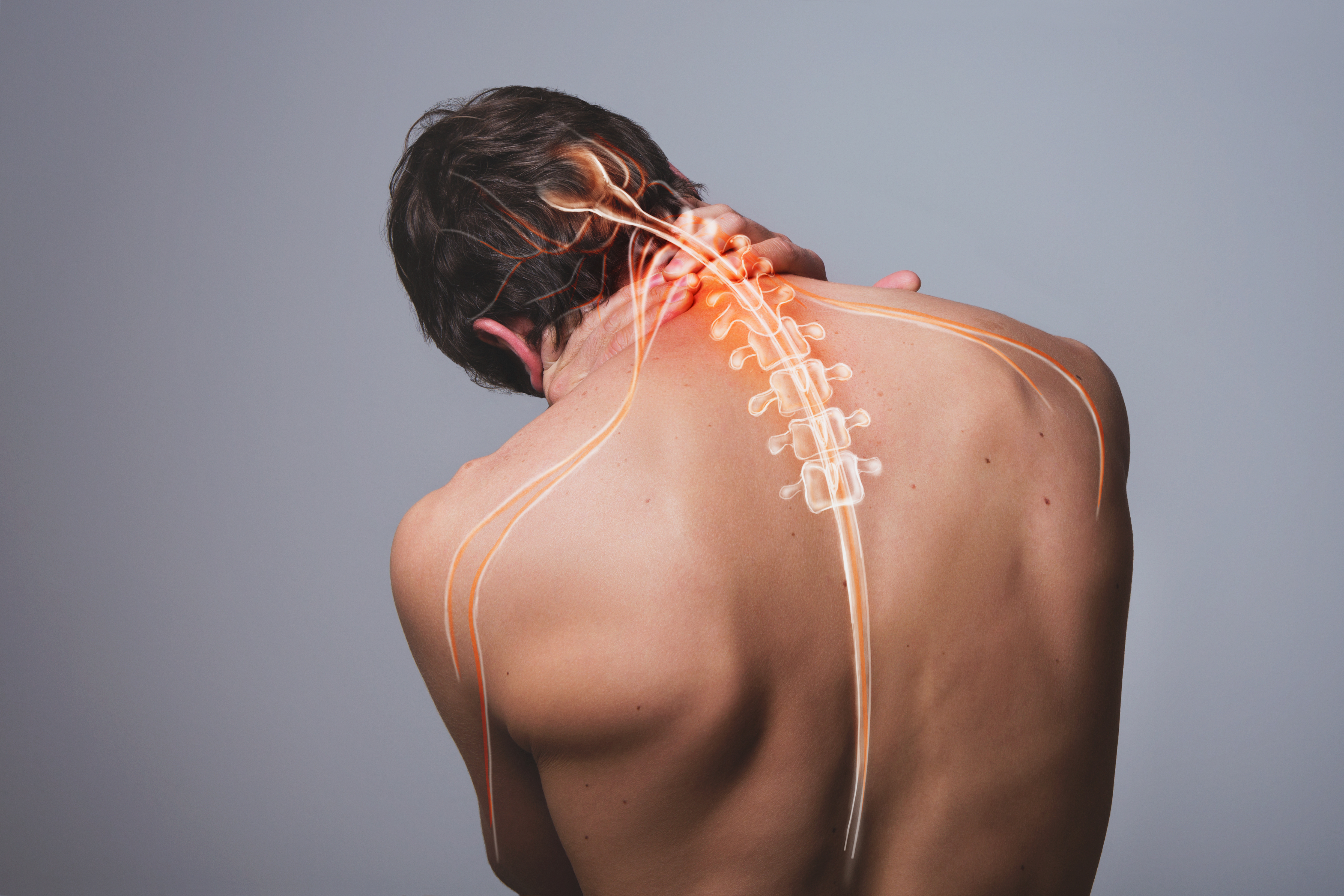BHDD-OIDD strives to ensure the health and welfare of its consumers are the first priority. BHDD-OIDD has a comprehensive system for reporting, collecting and responding to data related to abuse, neglect exploitation or other critical incidents that do not rise to the threshold of abuse, neglect or exploitation. BHDD-OIDD employs a full-time Incident Management Coordinator who tracks reports throughout the system to ensure compliance with State Law and BHDD-OIDD policy. BHDD-OIDD has a web-based reporting system on its secure provider portal that provides a real-time analysis function and allows the user to pull a variety of reports to assist in tracking and trending information. This review covers reporting within the appropriate time frames, completion of internal reviews, and a review of the provider’s management action taken to remediate identified issues such as staff training, staff suspension or termination, updates to risk management and quality assurance procedures and policies and other measures to provide safeguards for the consumers.
BHDD-OIDD recognizes that providers are the vital link in the continuing flow of information regarding Critical Incidents, Adverse Operations Events, and Abuse, Neglect and Exploitation reporting. As part of our ongoing assessment and review process, we want to make the reporting process as complete, accurate, and efficient as possible.
BHDD-OIDD has established provider requirements for reporting allegations of Abuse, Neglect, and Exploitation, Critical Incidents, Death Reports, and Adverse Operations Events. These reports must be submitted to BHDD-OIDD through its web-based Incident Management System. When submitting Incident Management Reports, providers must include a safety plan to protect the person from harm. BHDD-OIDD’s risk management actions must also be described.
SOME IMPORTANT REMINDERS:
- Serious consumer injuries of unknown or unexplainable origin must be reported to the appropriate state investigative agency according to the procedures outlined in 534-02-DD: Procedures for Preventing and Reporting Abuse, Neglect, or Exploitation of People Receiving Services from BHDD-OIDD or a Contracted Provider Agency. A serious injury of known cause (e.g., auto accident or fall) must be reported as a critical incident unless abuse is alleged in which case the report must be made to the appropriate state agency.
- Failure to provide proper supervision may be a form of neglect if the employee fails to intervene in a situation or provide proper supervision when they clearly have a duty to do so.
- Providers are required to have a safety plan in place whenever there is an allegation of abuse, neglect or exploitation. Please remember: 534-02-DD: Procedures for Preventing and Reporting Abuse, Neglect, or Exploitation of People Receiving Services from BHDD-OIDD or a Contracted Provider Agency, states the alleged perpetrator must be placed on administrative leave without pay pending the outcome of the investigation.
- If you have reported an incident to SLED and SLED did not investigate or vet to Local Law Enforcement (e.g., they vetted to the Ombudsman’s Office), and your own internal review indicates no violation of policy, you may return staff to active employment. You DO NOT need to submit a Request for Reinstatement of the employee(s). If your internal review indicates a violation of policy, follow your respective Provider and Personnel policies regarding issues of policy/procedure violations and disciplinary action. Once completed, you may return the employee to active employment.
- Only SLED, Local Law Enforcement or the Attorney General’s Office can make a determination of “founded” or “unfounded” on ANE Reports and Incidents. The Exception would be if a case was initially referred only to DSS, as in cases of Day Program reporting, then DSS CAN determine whether the allegation is founded or unfounded. The Ombudsman’s Office CANNOT make a determination of founded or unfounded criminal level abuse, neglect or exploitation. They may make a determination of non-criminal abuse or a Standard of Care Violation.
- Submission of an Addendum for Critical Incidents and ANE reports should reflect additional information subsequent to the Final Reports, verification of dates employees were reinstated and any change in disposition of administration/management review due to results of SLED or Local Law Enforcement investigations.
- If SLED accepts a report “For Information Only,” the ANE reporting process must be followed and Initial and Final ANE reports must be submitted to BHDD-OIDD. Once SLED assigns an Intake Number, BHDD-OIDD must follow this case to conclusion through required ANE reporting. If SLED vets a case of alleged ANE to the Ombudsman’s Office, you must still complete the required ANE reports and send to us, including the management review.
- Consistent with Directives 100-09-DD: Critical Incident Reporting and 534-02-DD: Procedures for Preventing and Reporting Abuse, Neglect, or Exploitation of People Receiving Services from BHDD-OIDD or a Contracted Provider Agency, reports must be submitted on the Incident Management System.
For additional training information related to the BHDD-OIDD Directives on Critical Incident and Abuse/Neglect/Exploitation reporting, the following slides are available:
Incident Management Reporting Process
Critical Incident/Adverse Operations Event Reporting Process (PDF)
Critical Incident?Adverse Operations Event Reporting Brochure (PDF)
Summary of IMS Changes for Providers (PDF)
Additional Provider Training Materials are available on the BHDD-OIDD Applications Portal under Business Tools. For technical assistance with the Incident Management System, please contact the BHDD-OIDD Helpdesk at (803) 898-9767.
- If SLED elects not to investigate a case (ICF/IID, non-ICF/IID and/ or day programs) and accepts the report “For information only,” does the provider have to conduct a review? Yes
SLED assigns an intake number for “Information only” cases and the information is entered into their database. As a result, we must have administrative closure to the case, and ANE reporting process must be followed. We need to know what prompted the call to SLED and what actions, if any, may have resulted. SLED will send BHDD-OIDD a Case Status Report.
- What should happen if a report is taken for “Information Only?”
You should initiate an ANE report as you would any other report. The staff accused must be placed on administrative leave without pay pending the outcome of the investigation by the outside agency. Your final report will be conducted using the process for administrative reviews involving misconduct.
Within the final report, all information obtained should be included in chronological order, in paragraph form and written with as much detail related to how the review was conducted. All items used to determine your conclusion should be uploaded as attachments. Your findings/conclusion should include any evidence of misconduct towards the supported person and if there were any policy or procedural violation, to include which policies/procedures were violated and the consequences for such action. REMEMBER YOUR PURPOSE IS NOT TO DETERMINE IF ABUSE OCCURRED, THAT IS FOR THE OUTSIDE AGENCY ASSIGNED TO INVESTIGATE THE INCIDENT.
- What happens when an allegation of abuse has a dual vetting?
When SLED vets a case to DSS/Ombudsman and to Local Law Enforcement, the incident will be concluded as a management review. Any vetting to Local Law Enforcement takes precedence over the other outside entity. The process for Management Reviews should be followed accordingly.
- If an allegation occurs at home or in the community, do we report to BHDD-OIDD?
If the person is served in an ICF/IID and is on a home visit, you must report to SLED and to BHDD-OIDD. If the person is served in a non-ICF/IID setting, a licensed BHDD-OIDD residence, or in a day program, the report must be made to DSS and documented in your agency files.
- When is a case considered “Closed?”
If SLED investigates for criminal intent, the case is “Closed” when SLED sends their Case Status Report to BHDD-OIDD. Cases vetted to the Ombudsman and DSS are “Closed” when the respective agencies render a finding. Employees are permitted to go back to work prior to case closure under certain circumstances as outlined in 534-02-DD: Procedures for Preventing and Reporting Abuse, Neglect, or Exploitation of People Receiving Services from BHDD-OIDD or a Contracted Provider Agency.
- What if I do not have a “LLE case closure” report by the time I complete the Management Review?
You will need to indicate that the incident is still pending investigation by an outside agency within the disposition under the “Allegation” tab, as well indicate that the incident is still under investigation by the outside agency has yet to be concluded under the “Outside Investigative Agency” tab.
- If an allegation is made in the community and staff is involved but not on duty, should staff be placed on leave?
The staff must be placed on administrative leave without pay to protect the consumer from harm. The appropriate review must be completed.
- If a local law enforcement case is not founded, is the staff person allowed to return to work?
BHDD-OIDD must have written verification of case status from the Local Law Enforcement or SLED. The reinstatement request may be submitted with a valid justification only after a Management Review has been completed by the provider. If the reinstatement request is approved by BHDD-OIDD, an Addendum to your report must be submitted within 24 hours.
- If abuse is alleged in a CRCF, is this reported in the same manner as an allegation in an ICF/IID is reported? No.
The process for reporting an allegation in a BHDD-OIDD operated CRCF is the same as a CTH or SLP.
- Which review process should be completed for an allegation in an ICF/IID?
An Administrative Review of Alleged Abuse, Neglect, or Exploitation-ICF/IID Facilities should be completed.
- What information should be included in an Administrative Review for Improper Conduct—both ICF and Non-ICF?
You can collect signed and dated statements from all involved, you may take photographs as needed/warranted, you may review and include all documentation related to the incident and you can interview all those involved in the incident. (If the case has been vetted to Local Law Enforcement in an ICF case, all the following still apply, as long as your actions do not interfere with those of Local Law Enforcement.)
Within the final report, all information obtained should be included in chronological order, in paragraph form and written with as much detail related to how the review was conducted. All items used to determine your conclusion should be uploaded as attachments. Your findings/conclusion should include any evidence of misconduct towards the supported person and if there were any policy or procedural violation; to include which policies/procedures were violated and the consequences for such action. REMEMBER YOUR PURPOSE IS NOT TO DETERMINE IF ABUSE OCCURRED, THAT IS FOR THE OUTSIDE AGENCY ASSIGNED TO INVESTIGATE THE INCIDENT.
- What information should be included in a Management Review?
You can collect any documentation associated with the incident-Therap entries, time sheets, nursing notes, logs, hospital notes, etc. (As this is considered a criminal case and has been vetted to Local Law Enforcement/Attorney General, NO statements can be obtained/read, nor can you conduct interviews with those involved.)
Within the final report, all information obtained should be included in chronological order, in paragraph form and written with as much detail related to how the review was conducted. All items used to determine your conclusion should be uploaded as attachments. Your findings/conclusion should include any evidence of misconduct towards the supported person and if there were any policy or procedural violation; to include which policies/procedures were violated and the consequences for such action. REMEMBER YOUR PURPOSE IS NOT TO DETERMINE IF ABUSE OCCURRED, THAT IS FOR THE OUTSIDE AGENCY ASSIGNED TO INVESTIGATE THE INCIDENT. Once you receive the case closure letter, you must then conduct your internal review into the incident to include collecting statements and conducting interviews as you would with any other review. The results, along with you review, should be submitted within an addenda.
- How are dates calculated for submission of Initial Critical/ANE and Final Critical/ANE Reports?
The counting STARTS on the day the incident occurred or day of “discovery”/date incident was first reported. All Initial Reports must be submitted via IMS to BHDD-OIDD Quality Assurance within 24 hours of the occurrence/discovery excluding week-ends and holidays. BHDD-OIDD observes all State and Federal Holidays. However, Facility or Board observed holidays may also be included in calculating Final report due dates. Any observed holiday by your Facility or Board during the respective reporting period must be noted on reports to avoid incorrect calculations.
- What information should be included in the initial Critical Incident?
Please include the information necessary that warranted the critical to be initiate, such as the date, time, and location and what about the incident met the critical criteria. Reference the GER as it relates to the Critical Incident report.
- What information should be included in the final Critical Incident?
Please include all information related to the - who, what, when, where, why and how of the incident. Include the current status of the person(s) involved, those supported, the staff or the provider, as well as all actions that will be taken to prevent another occurrence of its nature.
- Are Critical Incident Reports required for major medical incidents? No
Major medicals are now covered under Therap in the General Event Record, GER, section. All information and follow-up documentation, treatment and follow-up care should be documented there. However, it the major medical meets any other criterion, a Critical Incident report should be submitted accordingly.
- Where do we document staff injury related to aggression by a person supported?
You should document the incident internally and follow any provider HR protocol regarding worker’s compensation as needed. However, if the incident meets any other Critical Incident criteria such as Local Law Enforcement, resulting in a Case ID, police report or an arrest, the incident should be submitted as a Critical Incident report.
- Are bed bugs covered under the Hazardous Event section in the Operational Adverse section? No
Bed bugs are no longer considered a Critical Incident/Adverse Operational Event. However, they should be treated and documentation of such stored internally.
- What information should be included in the initial Death Report?
You can/should collect any documentation associated with the incident-Therap entries, time sheets, nursing notes, logs, training record, statements, BSG/BSP, MAR’s, hospital notes, death certificate, etc. When submitting the initial report, please include the suspected cause of death. If foul play is suspected or there is reason to suspect abuse attributed to the death, a report should be made to SLED, an ANE report initiated and the suspected perpetrator(s) placed immediately on administrative leave without pay pending the outcome of the investigation.
- What information should be included in the final Death Report?
Within the final report, all information obtained should be included in chronological order, in paragraph form and written with as much detail related to how the review was conducted. All items used to determine your conclusion should be uploaded as attachments. Your findings/conclusion should include any evidence of misconduct towards the supported person and if there were any policy or procedural violation; to include which policies/procedures were violated and the consequences for such action. If the incident warranted an ANE report, you would include this in the final report and a copy will be uploaded as a reference to the death report.
- Is a death report required on a person supported that has been discharged from the agency?
Yes, if the person supported has been discharged within 30 days of the death. Protocol should be followed accordingly regarding death reports.
- Am I required to submit an addendum for Critical Incident/ANE’s/Death Reports? Yes
When there is additional information that came about following the submission of the final report, if there needs to be an additional investigation, if the person is discharged from hospital/behavioral unit/agency following the submission of the final report or if you receive the case status report from Local Law Enforcement/Ombudsman/DSS/Attorney General. (Sometimes BHDD-OIDD will request that an addendum be submitted for various incidents as needed).
- What do I do if my provider is unable to submit a report via the IMS due to an internet outage?
If your internet is down for whatever reason, a hard copy of the report should be submitted and once internet service is back up, you need to submit the report via the IMS with a note indicating the reason for the delayed submission. {As a backup, send a SComm regarding the date(s) of outages.}
- Where do I find training on how to use the IMS?
Training can be found on the IMS under “Business Tools.” On the IMS Application Listing screen you would:- Click “Business Tools,” located at the bottom of the screen
- Click “Videos” under Folders
- Click “Application Training” under Folders
- Click whatever training session you would like to view under Folders
- To exit the program click the folder with the red arrow at the top right of the page and it will take you back to the IMS Application Listing Screen.
- If your provider is closed for any reason outside of State/Federal Holiday, be sure to include the date(s) and a reason for the provider closure in the notes section of the report. Without that information the initial and final due dates will be assigned accordingly.
[This DOES NOT include the weekend or outside of standard operation hours.]
- If you have an incident that does not meet the Critical Incident/Adverse Operations Events criterion, but your provider would like the incident to remain in the system, please let the QA department know ASAP, so the incident will not be terminated from the system.
All Final Critical and Final ANE Reports must be submitted via IMS to BHDD-OIDD Quality Assurance within 10 business days of incident date or date the incident was first reported/ discovered. However, Final Critical and ANE reports for incidents occurring in an ICF/IID must be submitted within 5 days, excluding week-ends and holidays.
If the information or investigation is not concluded by the Final Report due date, submit the Final Report by the due date and then submit an Addendum when the investigation is complete or as new information becomes available.




